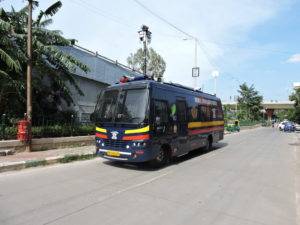Introduction
In the October 2009 Tech. Brief we had discussed the issue of more megapixels being misperceived as translating to better quality images: The Megapixel Myth – More Is Always Better (Parts 1 & 2). The conclusions from the briefs were that more important than just the number of megapixels, were the quality and size of the sensor: “In compact digital photography, 6 megapixels is widely quoted as the resolution beyond which viewers fail to register a significant improvement in image quality. However, this number is a gross simplification; because the actual determinant of image quality is pixel size. Provided the sensor is sufficiently large, one can keep increasing resolution and see a corresponding increase in image quality (finer detailing). The threshold for good image quality seems to be a pixel size of > 3 µm2.”
With the improvement in sensor technology, and the concomitant reduction in the cost of “more-megapixel” sensors, IP video surveillance cameras supporting megapixel resolutions are commonly available. This brief looks at some of the mega high-resolution IP video surveillance camera offerings, and their uses, if any.
How Mega is Mega?
High-resolution video surveillance cameras are quite common these days, from well-known and niche vendors, thanks to the increasing penetration of IP video surveillance. Vendors such as Axis, Arecont, Avigilon, Dallmeier, Mobotix, and Sony offer cameras ranging in resolution from 2 MP to 16 MP, built around a single sensor. The table below lists down the commercially available mega megapixel video surveillance camera resolutions, along with fps.
| Figure 1: Mega megapixel IP video surveillance camera resolutions |
The point to note is that as the resolution increases, frame-rate drops; and that is the trade-off for a higher resolution. One way around this trade-off is by using multiple sensors in a camera, thereby realising a resolution in multiples of the sensor resolution, based on the number of sensors used.
That’s what the German security solutions company, Dallmeier electronic GmbH & Co.KG, did with its newly introduced Panomera camera. It recently won the IFSEC Award for “CCTV Camera Equipment of the Year”, in the recently concluded industry tradeshow in the UK. The Panomera uses a multi-sensor concept and novel lens to scale up to 51 MP in real-time, at high-frame rates of up to 30 fps.
Applications for Mega-Megapixel cameras
Given an earlier statement that viewers (whether video surveillance professionals or digital photography consumers) fail to register a significant improvement in image quality above 6 MP, what are the applications mega-megapixel video surveillance cameras can be used for?
- Huge-width and large-distance surveillance
In surveillance areas that are large in area, both in width and distance, a mega-megapixel video surveillance camera will effectively replace several megapixel or standard video surveillance cameras; thereby benefiting the user in terms of installation cost and ease of management. - Complete recording
PTZ cameras are typically used for large-surveillance area coverage, but they suffer from the disadvantages that, ideally, a human resource needs to be constantly monitoring the feed; and, more importantly, that when a PTZ camera zooms in to an area/incident of interest, what happens in the rest of the surveillance area is never captured. A mega-megapixel camera allows complete recording of the target surveillance area, even when a user zooms in to inspect an area/incident of interest. - Multi-user facility
Thanks to the multiple sensors architecture, multiple human resources can monitor the video feed from a mega-megapixel camera, each looking at different areas/incidents of interest. Please note that not all multiple-sensor cameras support this feature, since it requires the video management software to allow users to access individual sensors. - Mechanical Robustness
With specific reference to the alternative of using PTZ cameras, a mega-megapixel camera is mechanically more robust, as it features fewer moving parts and fixtures: solid-state electronics is less of a maintenance worry than moving mechanical parts.
Conclusion
It turns out there are use-cases for mega-megapixel video surveillance cameras: it is just that these need to be examined and analysed carefully, before a decision is taken to go in for the solution. On a Bill-of-Material basis, multiple low-resolution or megapixel cameras may be less expensive than one mega-megapixel camera, but after factoring in hidden costs such as maintenance, trained personnel, and installation, the Total Cost of Ownership (TCO) of a mega-megapixel camera can be lower than several standard definition video surveillance cameras.
Mistral offers a range of IP surveillance cameras offering varying levels of megapixel resolution.



